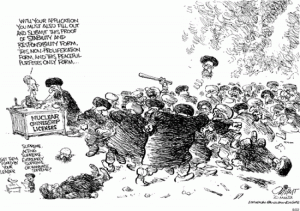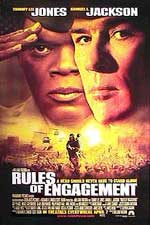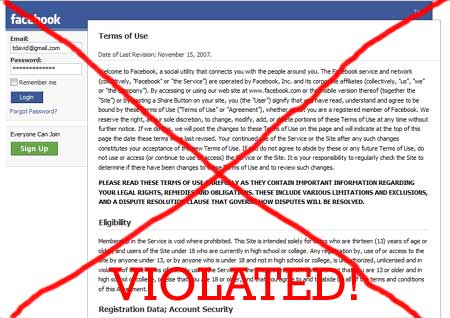A sample text widget
Etiam pulvinar consectetur dolor sed malesuada. Ut convallis
euismod dolor nec pretium. Nunc ut tristique massa.
Nam sodales mi vitae dolor ullamcorper et vulputate enim accumsan.
Morbi orci magna, tincidunt vitae molestie nec, molestie at mi. Nulla nulla lorem,
suscipit in posuere in, interdum non magna.
|
Pat Oliphant’s editorial cartoon today captures the disconnect between global geopolitics and the people-powered “almost revolution” going on in Iran these days. Diplomacy and NGOs like the United Nations will remain basically unchanged no matter what. Sadly true. I am afraid the demonstrators are on their own and it seems a vicious crack-down is coming soon.

Pat Oliphant 23 June 20009
Posted via email from glenn’s posterous
This weekend’s events in Iran were stirring, scary and historic. More about the impact of social media and technology later, but for now just look at this near real-time photo posted via TwitPic from Tehran as of Monday afternoon. It has all the qualities to become an iconic image of these protests and what increasingly appears to be evolving before the world’s eyes — not on major television or newspaper media, which are largely repeating posts from the Twittersphere —into either a popular revolution or prelude to a massive and violent crack-down by the clerics.

As Mike Madden writes today in Salon, of course “social media is documenting the Iranian revolution — not leading it.” But that still requires media exposure, coordination and communication, all of which Twitter supplies in spades. No, social media will not bring down Ahmadinejad, the Iranian people can only do that. Imagine if Tom Paine in 1775 or Cory Aquino in 1987 had the one-to-many power of social networking communication instead of pamphlets and radio. Just as “Internet time” speeds up the old world, so too does social media — whether China, Iran or otherwise — provide a new and powerful tool for political revolution.

Posted via email from glenn’s posterous
It was 20 years ago today (thanks, John & Paul…) that China sent its military into Tienanmen Square to put down a student-led uprising devoted to inculcating Western democratic values into the PRC. The photos of that young man standing in front of a row of tanks will never lose their place among the most famous images in history.
 Tienanmen Square 1990 But imagine if the Tienanmen protests had been coupled with the power of the Internet, especially social media. Just as news is dispersed even quicker on Twitter than Web-powered news sites — which themselves compress the news cycle to hours from days — the immediacy of social media provide a fertile ground for mass gatherings and other grassroots organizing efforts. In the U.S., we can see this with Tweetsgiving and the like, plus MoveOn and other progressive political activists. In the authoritarian parts of our world, however, it is the opposite.
The answer to the imaginary question is that if Twitter and other social media networks had been available in China, Shanghai might already be free, more than economically. One can see this clearly from the reaction of the Chinese party to social media in its preparations to bury anniversary celebrations of the Tienanmen massacre. China Blocks Twitter, Flickr, Bing, YouTube and Hotmail Ahead of Tiananmen Anniversary [guardian.co.uk]. It is hardly different from Iran, for example, which banned Facebook for nearly ten days leading up to its recent elections, or Cuba and other repressive regimes blocking Internet technology and sites in order to control propaganda. But the significance is overwhelmingly real. ”Information wants to be free,” the old watchword of hacking and digital freedom proponents, is alive and well in this Web 2.0 era. Just check out the trending Twitter topic #ChinaBlocksTwitter to see for yourself.
This Mashable headline suggests, as devotees understand viscerally, that the Internet’s current social networking phenomenon is radically changing communications modes on the Net. Not only is email on the way out, but now the very existence of “static” Web sites is being questioned.
This is more than a question of style, I suggest. The real-time, one-to-many nature of social media communications, including the near-instantaneous (and highly personalized) responses generated by Facebook, Twitter and the like, is revolutionizing business. In my legal practice, there are already clients and potential clients who message me almost entirely via social media. Yes, there are risks involved, like privacy, but the time spent on social media sites rewards users by giving them a mode for interaction that is intergrated with their digital lifestyles.
So the answer to Mashable’s question is almost certainly “yes,” as far as brand-protection and CRM are involved. Obviously, Web sites will still be important for software updates, product downloads and the like. But more and more, business interactions with customers and vendors will likely be by status update or “social stream.”
Which raises perhaps an even more important question. Is “social media” plural? If so, the headline should read “Are social media….”
Posted via email from glenn’s posterous
OK, so my new colleague Ryan Wynia at BeYOB.com posted, in bullet form, the “rules of engagement” for social media for businesses I presented at SPARKt2 in Chicago on April 29. Glenn Manishin’s Rules of Engagement [BYOB]. But that short treatment misses some of the nuances, and besides, I thought of them first! So here are my six rules of engagement for social media — Twitter, Facebook, etc.– all of which can be summed up in the phrase “if you are going to do it, do it right.”
1. Be Authentic…Have an Identity. When using social media for business, you must establish a unique identity. While the early Web was accompanied by the slogan “No one knows if you are a dog on the Internet,” social media are different. Reputation and credibility flow from identity. If you want to develop business via social media, don’t be anonymous and do not be a cartoon. Logos may be fine for corporate PR and customer relations postings, but without a profile photograph, bio and link, audiences will be far less likely to follow you and even less willing to believe what you say.
2. Offer Value (Content), Not Self-Promotion. This should be a no-brainer. When participating in social media, what is of interest to other members is substance. Despite popular misconceptions, social networking is not about revealing what one ate for breakfast. Rather, it is providing domain expertise to others by sharing one’s knowledge, experience and insights. Twitter is filled, for instance, with get-rich quick and Web marketing schemes, life coaches, success gurus, MLM schemers and others engaged in overt sales pitches. They are rapidly becoming classified as “Twitter spam” and rightfully ignored. To gain an audience, talk about what you know, not what you sell.

3. Listen to the Audience. A corollary to rule #2, stay sensitive to “trending” topics and engage on matters of relevance to the audience. That means listening as much as talking on social media sites. A traditional maxim for negotiations is that one must acknowledge the views and statements of others (”I hear what you say…“) before responding, especially if critiquing. By engaging after listening, one can ensure that posts and updates reflect the issues on which the audience is looking for information. And by providing it, you can and eventually will gather your own audience of followers and readers.
4. Tone Matters. “Social stream” is rapidly replacing email as a dominant form of digital communication. But even more than email, social presence and status updates are communicated in near real-time, meaning that hitting the “post” or “update” button without thinking about the wording of your content can be disastrous. Mainstream media is filled with stories of employees being disciplined or fired, and applicants rejected, because of inappropriate “Tweets.” This is so way more problematic than a college student uploading drunken beer pong photos to Facebook or Flikr. Sacrcasm reads even worse on social media than it does in email. Avoid flame wars at all costs!
5. Follow, Answer and “Retweet.” The Web is about content and community, not technology. So after adjusting to the immediacy of social streaming, the most important aspect of doing business on social media is engaging that community by participating as a full-fledged member. Lurking is dated and counterproductive. Interact with others, promote good ideas by following and reposting authors. The more you participate the more you can profit in the long run.
6. Remember That “Tweets Live Forever.” Nothing one posts on social media sites goes away, even after one quits. Facebook, for instance, made clear in February that content shared with other members survives if a member cancels his or her subscription. Blog comments, Twitter posts, etc., are archived and indexed by Web bots and spiders almost instantly. You can delete a Tweet, but chances are almost 100% it remains visible to the world. So when posting content, ask the old question–would you want your update to appear on the front page of the New York Times? If the answer is no, trash it and move on. Remember, social media for business is about brand and reputation building. You will never sell anything if your “recalled” updates brand you as a loose cannon or a curmudgeon.
What do you think? Reactions appreciated. You can also check out my companion post on SiliconANGLE.
Two weeks ago there was a major outcry within the Facebook community over revised Terms of Service (ToS) for the hugely popular social networking site. The gist of the protest was an implication in the new ToS that Facebook claimed “ownership” of user-generated content (UGC) and reserved the right to market it for for commercial purposes.
 Facebook ToS That conclusion would be rather stupid from a business perspective and was quickly disowned by Facebook management. Facebook CEO Zuckerberg: “We Do Not Own User Data” [Mashable]. But because this was a Website policy, changeable unilaterally without user consent, it leaves unanswered the larger question of whether UGC is owned by the person posting the content, the person on who’s page/site the content appears or the owner of the service/server. The issue is WAY broader than Facebook. It applies, for instance, to comments posted on newspaper sites, blogs, photos shared on Flickr and the like, and many more applications.
Today I am not trying to answer the question, rather raising some. In the law of traditional commercial relationships — say banking or telephony — the “content” one shares with a company is owned by the corporation. Your banking records can be obtained by the government without your consent because they are “owned” by the bank. Only sector-specific privacy laws like Gramm-Leach-Bliley, which are altogether too rare in the United States, limit what the company can go with data arising from its relationship with customers. Hence, Facebook was possibly wrong (although correct from a customer relationship standpoint) to argue that it needed a license from one user to display his/her content on the “Wall” of another user, even when the first person had affirmatively decided to share that UGC by posting it within Facebook.
But what of corporations as employers? Since the law is settled, right or wrong, that a company owns emails generated on its systems, regardless of whether work-related, will that same conclusion hold for social communications sent and received via an enterprise Internet connection? And what of copyright; if a user posts photos to a sharing site, does that act imply either abandonment of their ownership interest or the grant of a “fair use” right to republication in full to the world?
These are interesting, and perhaps important, questions in the developing law of social media. Stay tuned here for more analysis and discussion as we make some tentative predictions of how the law will evolve and whether, in the ultimate analysis, it matters.
Well, this has got to take the cake. The official trade rag of the legal industry — a notorious technology backwater for decades — is publicizing the wonders of the Internet social networking phenomenon Twitter. And that’s not all. More Attorneys Tweet in Twitterverse [ABA Journal]. Of course, being lawyers they take credit for the whole thing:
Attorneys posting such “tweets” on Twitter are credited with helping to drive a massive increase in subscribers this year, from fewer than 300,000 at the end of 2007 to an estimated 3 million-plus by the end of 2008.
Yeah, and the ABA will single-handedly solve global warming and welcome the messiah to Earth. That would apparently be Messiah 2.0 now!
So if Howard Dean and MoveOn.org mastered online contributions and bogs, Barack Obama has shown that he doesn’t get social networking. One For Actual Journalism: Barack Obama VP Pick Fails To Arrive First Via SMS And E-mail [paidContent.org]. The idea was that Obama and his self-styled new politics would go viral through Web technology and his VP choice. The reality is that he went backwards with the latter and simply bombed on the former. Sure, the campaign now has a cellphone database — free — all in the hands of sorely disappointed early adopters. Not a good sign in my view.
|
|






